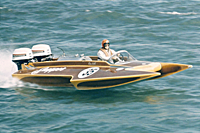I saw these pistons up for sale on E-Bay. The seller Glass beaded all for piston.
I am no expert on beading but I was always told never, never glass bead the skirts of a piston because you can never get the glass bead thats inpregnated into the aluminume removed enough to not scratch the H** out of the cylinder walls. Is this true? Or just myth? Sure look pritty.


 Thanks:
Thanks:  Likes:
Likes: 
 Reply With Quote
Reply With Quote









Bookmarks